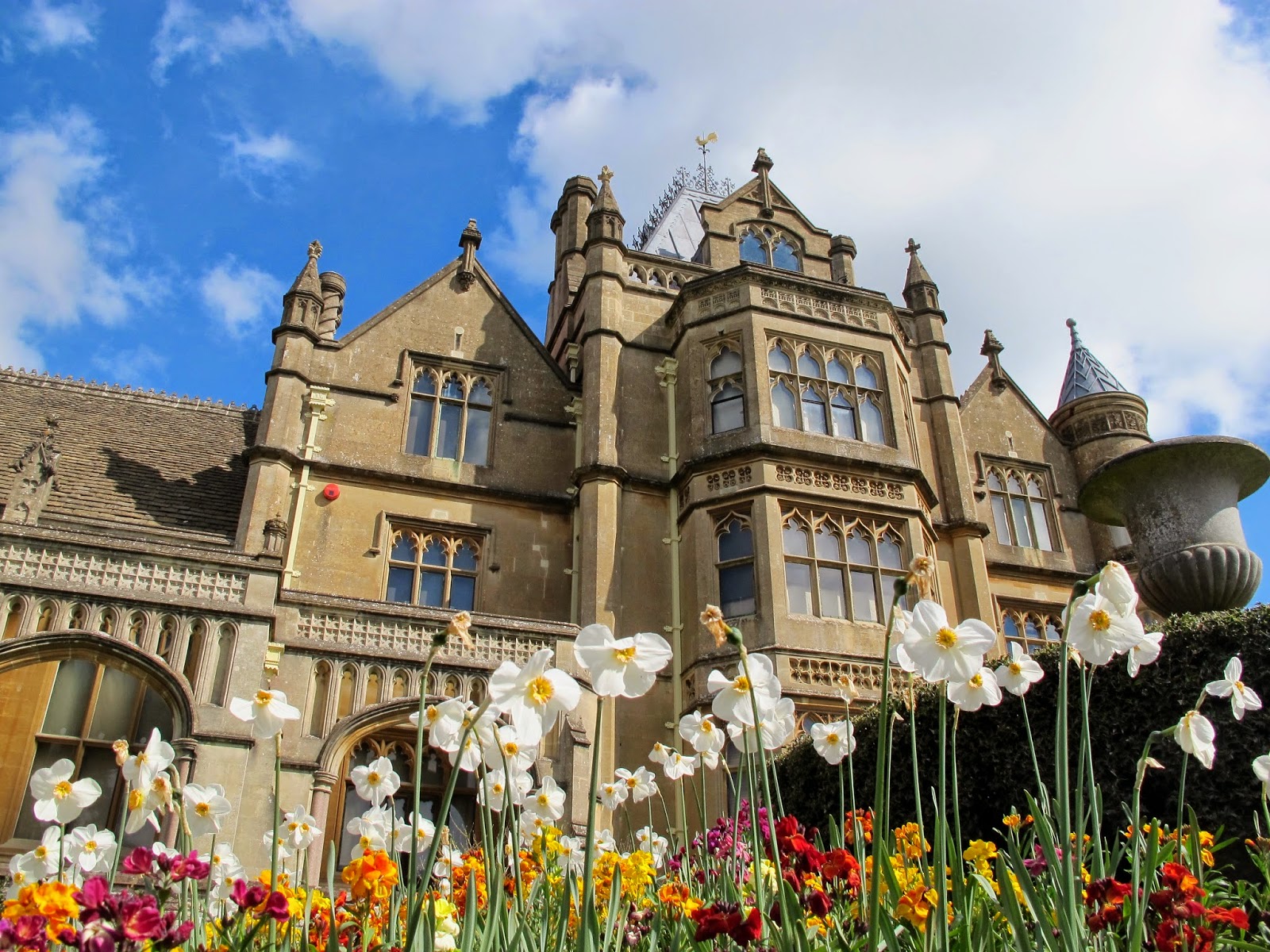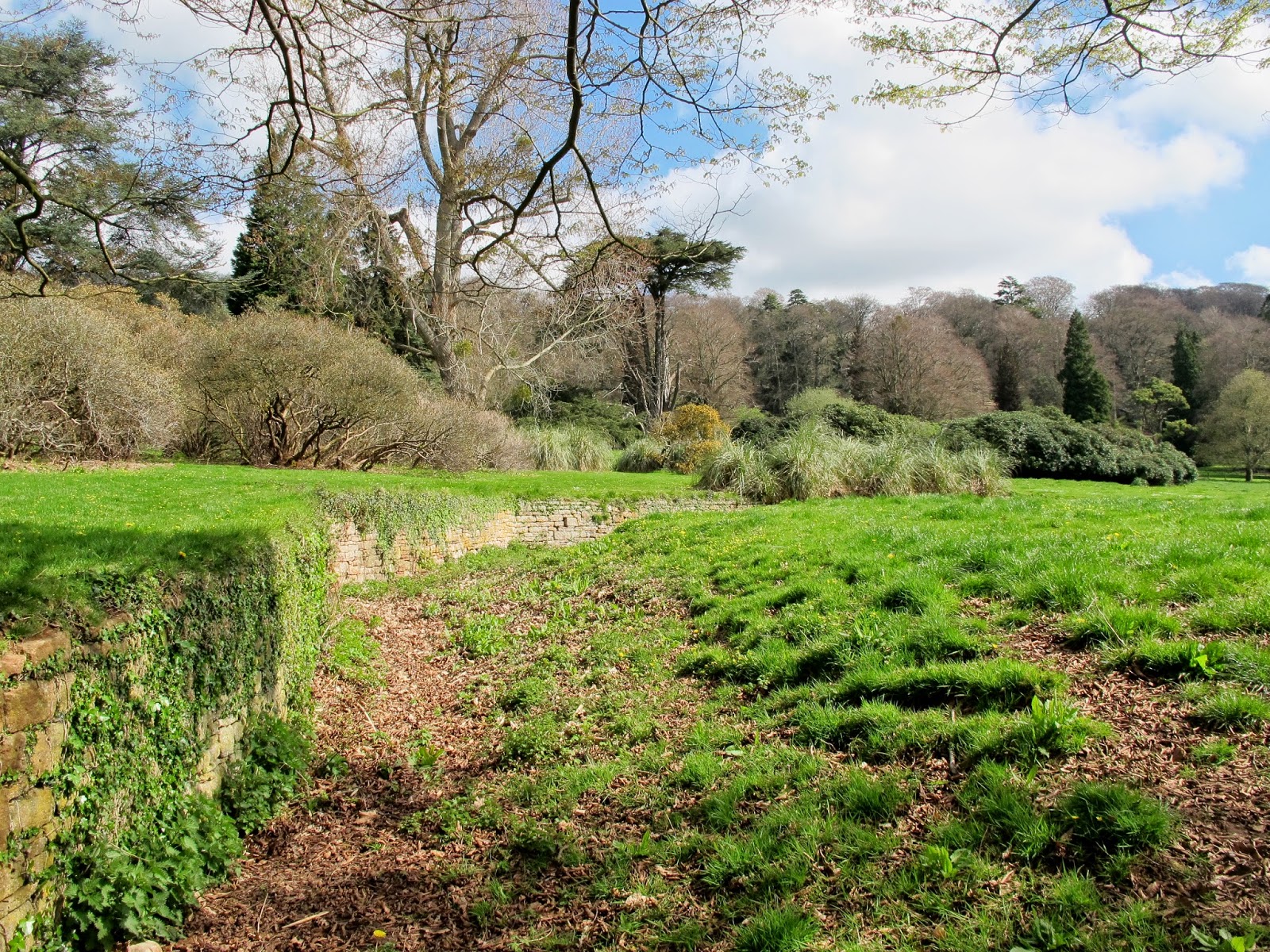This is the post I was talking about here when I couldn't upload the photos!
We’re still packing!! Although the pace has slackened since my mother-in-law left yesterday… and now my husband has also left to work over the weekend, so it is just me here to get everything ready for the moving truck on Monday morning. Not a task I am relishing!
We’re still packing!! Although the pace has slackened since my mother-in-law left yesterday… and now my husband has also left to work over the weekend, so it is just me here to get everything ready for the moving truck on Monday morning. Not a task I am relishing!
I have decided that I want a
break from thinking about packing, plus there really is no point writing
another blog post about packing! Then I remembered that I still haven’t written
yet about our visit to Tyntesfield a couple of weeks ago, when we went with my
Aunt. We had gone to Somerset to visit my brother-in-law for a
birthday/house-warming celebration, and so on the way there we stopped with my Aunt and her
husband for a couple of days, as they live in Somerset too.
I had told my Aunt that we were
now National Trust members, and so she recommended a day out to Tyntesfield house and gardens. There are loads of places around Somerset to visit, but I had
never been to this particular place before.
Tyntesfield is a
Victorian Gothic Revival house in gardens and parkland, created by one of
England's richest commoners, William Gibbs. Gibbs had built his fortune on importing
guano, perhaps not the most glamourous way to make a fortune, but seemingly
effective!
The estate remained in the Gibbs
family over 4 generations, from the 1800s until 2001. The National Trust
launched a big campaign to raise money to buy the property when it came onto the market after the death of Richard Gibbs, raising millions of pounds from public donations, private donations, plus £17.4 million from the National Heritage Memorial Fund. The National Trust opened the house to
the public almost as soon as they took up the keys. Some of the Estate was also sold off separately as part of this deal, so the Estate as a whole no longer exists.
My aunt has visited Tyntesfield at various stages of the development of the property, and she was able
to point out to us as we walked around various areas where things have been
restored to give us an idea of the work that the Trust have done there.
Most of the work taking place to
restore and reconstruct has been in the gardens, which is where we began our
visit, so I thought that for now I will show you some pictures of the gardens,
and then I will show the house later. If I’m honest with you, I’m kind of too tired
to write too much right now! (plus I don’t want to bore you too much all in one
go… haha)
I loved these yellow flowers on this tree:
There was white blossom too
I loved how these leaves looked with the sun shining through them:
Then we caught sight of the Rose Garden:
We went into the Rose Garden
This arched walkway has been covered with carefully trained roses (gardening trained - they can't do tricks or anything!) which I'm sure will look gorgeous when they bloom, not to mention the fragrance you'd get walking through a tunnel of roses!
At the end of the garden are some flowers, not roses though - but still beautiful:
A view from the top of the rose garden:
Then our walk took us towards the House, down a driveway lined with topiary:
It wasn't time to go inside yet, so we admired the flower beds instead. I've never seen hyacinths this colour before!
We also admired this palm tree, a strange tropical/temperate mix with those daffodils around the base!
There were more flower beds around the corner...
...with brilliant views of the facade of the house
Work was underway to reshape the trees in the Yew Tree Walk after they had grown wild - a sign explained that they seem to have been hacked back quite harshly, but the yew trees will regenerate well from the bare wood once the light gets in. The sign made it seem that only yew trees can do this, but I think lots of trees can send out new shoots from woody parts to carry on growing - think of coppicing and pollarding?
The grounds had some lovely trees, both native and exotic. Collecting exotic trees and plants from around the Empire was popular in Victorian times, amongst those who could afford it.
I used to love monkey puzzle trees when I was small!
I can't remember the name of this type of field divider!! It's really bugging me, but I have spent all the time I can afford on Google already without finding it... If anyone can remind me that would be great!
It's a very clever design, as you can see the land is cut down gradually on one side, before rising again to the normal level - but this time vertically, reinforced with a wall. This vertical wall provides a barrier for livestock to prevent it coming onto the gardens, while the whole structure is not visible from the direction of the house. Therefore you can keep the animals off your beautiful garden, while gazing out of the windows from your country pile without an ugly fence spoiling your view ;)
Walking down the gardens, we come to the kitchen garden with its glass houses.
The flowers are gorgeous, but I have a real fondness for succulents - I haven't seen ones like these before. They look like the low-growing ones like Sempervivums, but these have tall stems. Very cool. I will definitely be having more succulents in Australia!
After this the time has come for us to visit the house - the tickets are timed so that they can control the stream of visitors through the house. This makes things easier for them, better for the house, and - as long as it's not raining and you are happy to enjoy the gardens while you wait - better for visitors as it is less crowded.
We walk back up the road to get to the house, and I will share some of those pictures in another post :)
Then our walk took us towards the House, down a driveway lined with topiary:
It wasn't time to go inside yet, so we admired the flower beds instead. I've never seen hyacinths this colour before!
We also admired this palm tree, a strange tropical/temperate mix with those daffodils around the base!
There were more flower beds around the corner...
...with brilliant views of the facade of the house
Work was underway to reshape the trees in the Yew Tree Walk after they had grown wild - a sign explained that they seem to have been hacked back quite harshly, but the yew trees will regenerate well from the bare wood once the light gets in. The sign made it seem that only yew trees can do this, but I think lots of trees can send out new shoots from woody parts to carry on growing - think of coppicing and pollarding?
The grounds had some lovely trees, both native and exotic. Collecting exotic trees and plants from around the Empire was popular in Victorian times, amongst those who could afford it.
I used to love monkey puzzle trees when I was small!
I can't remember the name of this type of field divider!! It's really bugging me, but I have spent all the time I can afford on Google already without finding it... If anyone can remind me that would be great!
It's a very clever design, as you can see the land is cut down gradually on one side, before rising again to the normal level - but this time vertically, reinforced with a wall. This vertical wall provides a barrier for livestock to prevent it coming onto the gardens, while the whole structure is not visible from the direction of the house. Therefore you can keep the animals off your beautiful garden, while gazing out of the windows from your country pile without an ugly fence spoiling your view ;)
Walking down the gardens, we come to the kitchen garden with its glass houses.
The flowers are gorgeous, but I have a real fondness for succulents - I haven't seen ones like these before. They look like the low-growing ones like Sempervivums, but these have tall stems. Very cool. I will definitely be having more succulents in Australia!
After this the time has come for us to visit the house - the tickets are timed so that they can control the stream of visitors through the house. This makes things easier for them, better for the house, and - as long as it's not raining and you are happy to enjoy the gardens while you wait - better for visitors as it is less crowded.
We walk back up the road to get to the house, and I will share some of those pictures in another post :)























No comments:
Post a Comment